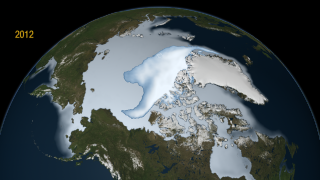Earth
ID: 10919
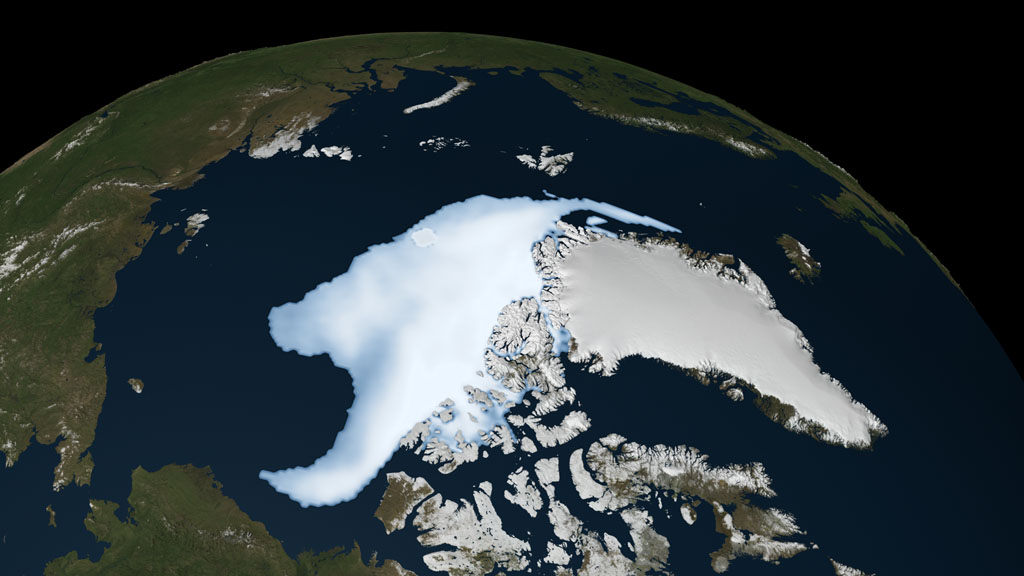
As sea ice in the Arctic swells in winter and shrinks in summer, it gets pushed and pulled by winds, dynamic ocean currents and changing temperatures that continually morph its shape and size. But when scientists observe the Arctic on a longer time scale, the floating, frozen landscape in flux reveals a clear trend: The oldest and thickest sea ice in the Arctic is disappearing even faster than younger and thinner ice at the fringe of the polar ice cap. According to a new NASA study, the total area covered by hardened Arctic sea ice that has survived multiple summers is now declining at a rate of 17.2 percent per decade. What was once a sizable circular mass on top of the planet now looks more like a diminishing crescent, clinging to the coastline of Greenland and northern Canada. Watch the visualization below to witness how the Arctic's thickest sea ice has declined from 1980 to 2012.

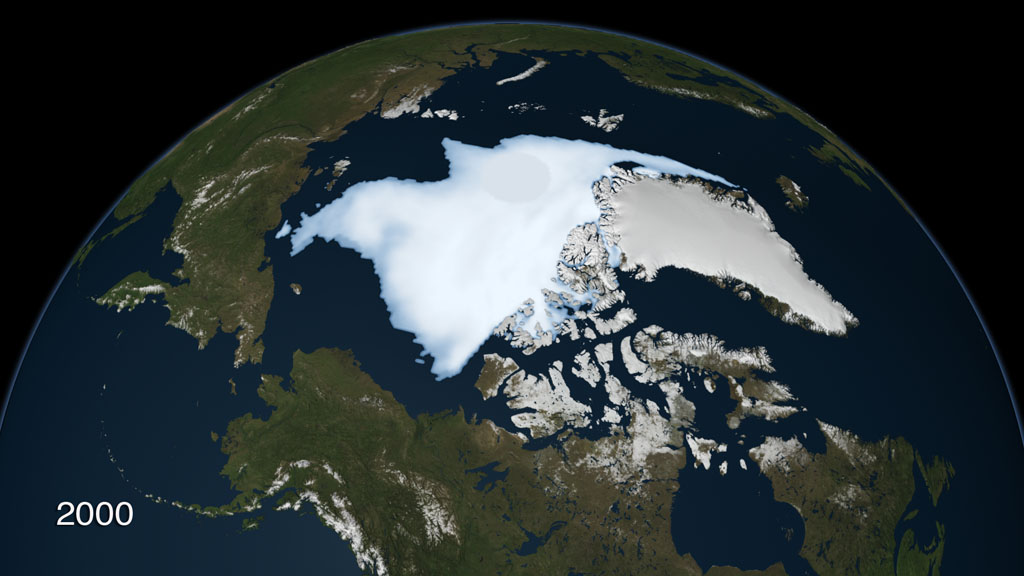
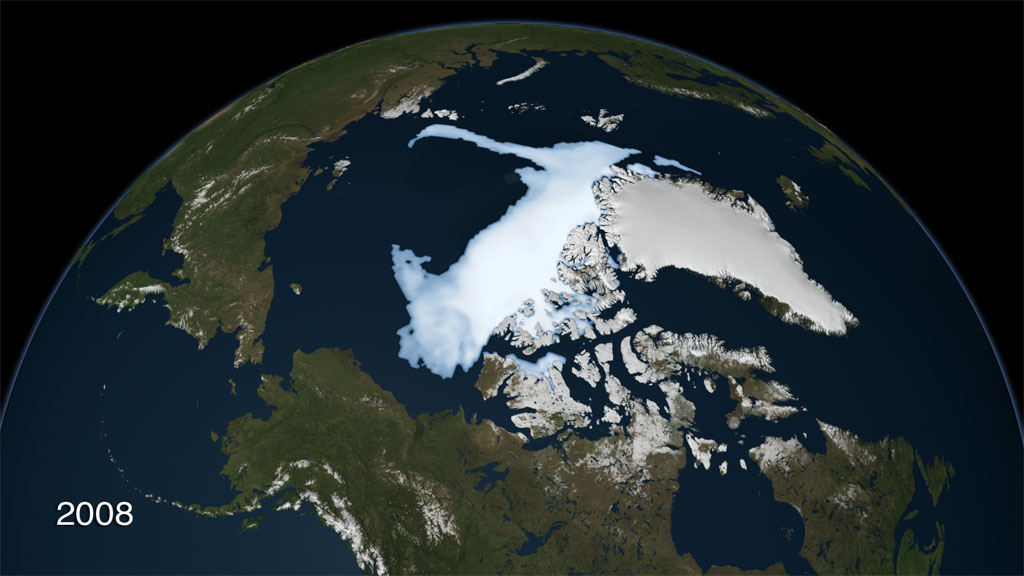
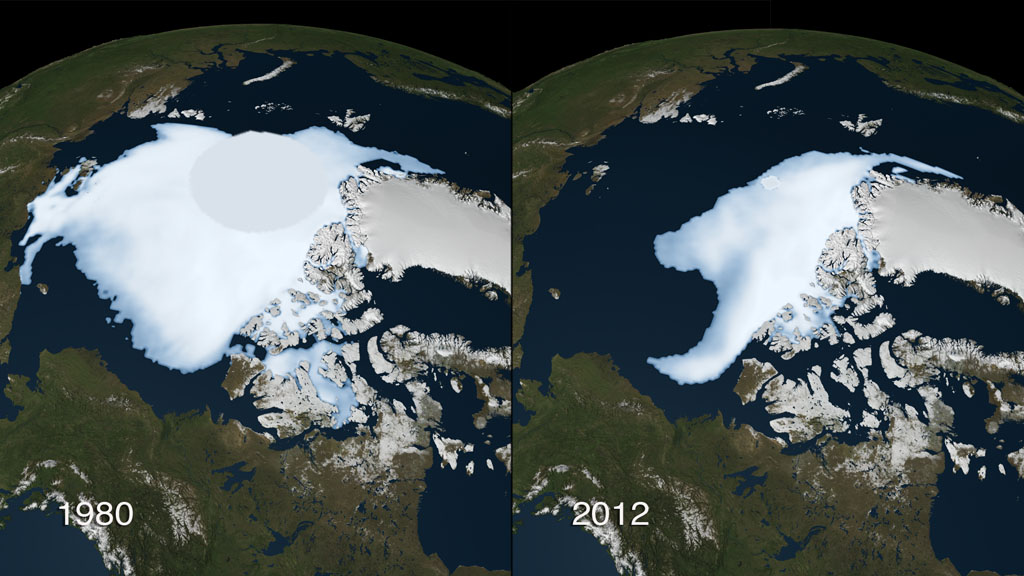
The Long Thaw





Related Stories
For More Information
Story Credits
Visualizers/Animators:
Cindy Starr (Global Science and Technology, Inc.)
Lori Perkins (NASA/GSFC)
Greg Shirah (NASA/GSFC)
Narrator:
Patrick Lynch (Wyle Information Systems)
Producers:
Kayvon Sharghi (USRA)
Jefferson Beck (USRA)
Lead Scientist:
Josefino Comiso (NASA/GSFC)
Project Support:
James W. Williams (GST)
Lead Writer:
Patrick Lynch (Wyle Information Systems)
Cindy Starr (Global Science and Technology, Inc.)
Lori Perkins (NASA/GSFC)
Greg Shirah (NASA/GSFC)
Narrator:
Patrick Lynch (Wyle Information Systems)
Producers:
Kayvon Sharghi (USRA)
Jefferson Beck (USRA)
Lead Scientist:
Josefino Comiso (NASA/GSFC)
Project Support:
James W. Williams (GST)
Lead Writer:
Patrick Lynch (Wyle Information Systems)
Please give credit for this item to:
NASA's Goddard Space Flight Center
NASA's Goddard Space Flight Center
Short URL to share this page:
https://svs.gsfc.nasa.gov/10919
Keywords:
DLESE >> Narrated
SVS >> App
NASA Science >> Earth
https://svs.gsfc.nasa.gov/10919
Keywords:
DLESE >> Narrated
SVS >> App
NASA Science >> Earth

